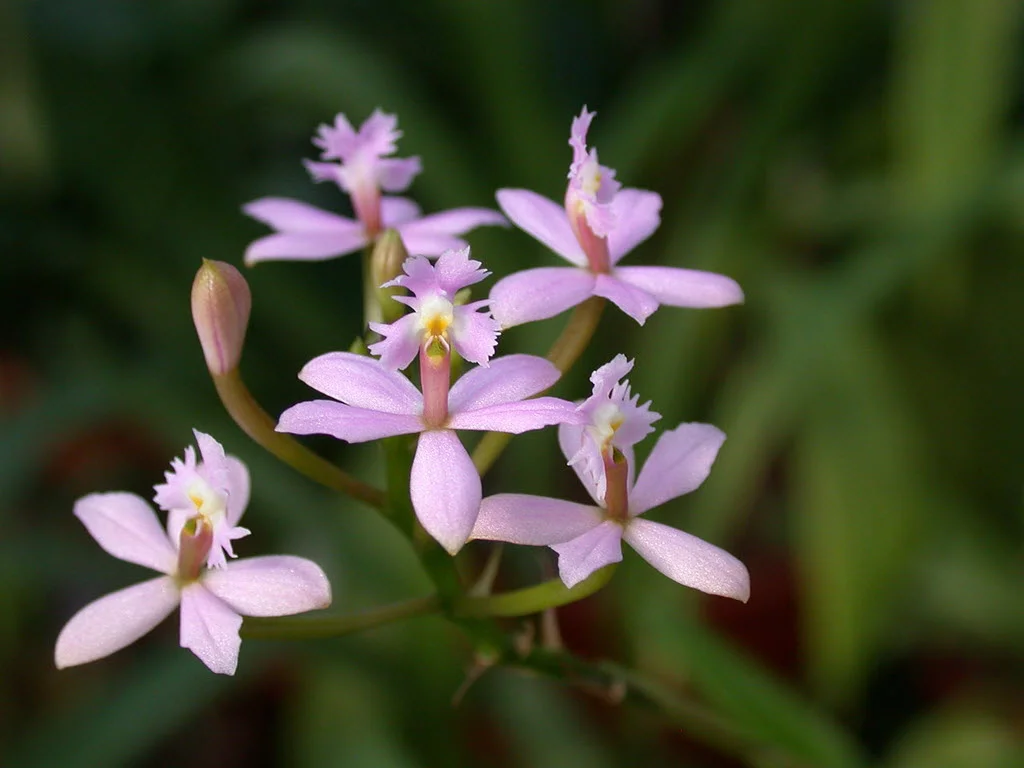Table of Contents
Pronunciation: E-pee-DEN-drum
Other Names: Tree Orchids
Introduction
Epidendrum orchids have very long reedy stems that produce tight, bright bunches of flowers at the tip. Additionally, the flowers have a fringed lip that fuses to the flower's column, and they grow exclusively in or on trees.
Epidendrum butterpatty
There are currently over 1,000 species in this orchid genus, and butterflies and hummingbirds are their main pollinators. They're a forgiving orchid species that are slightly more challenging to grow due to their maintenance requirements.
Temperature
The temperature requirements vary by species, but most of them do well with daytime temperatures that fall between 65°F and 75°F (18°C to 24°C). They can comfortably tolerate temperatures that stay around 50°F (10°C), but they won't grow at this temperature.
During the nighttime hours, they like their temperatures to drop slightly. They tend to grow the best with temperatures between 55°F and 60°F (13°C to 16°C). They can also tolerate moderate temperature fluctuations during the daytime and nighttime hours without sustaining damage.
Light
Almost of the orchids in this genus like to have very bright light and some even prefer direct sunlight. However, if you're not sure how much light your orchid prefers, experiment. You can start by setting them in a window that gets bright morning sunlight. If you notice sunburn on the leaves, adjust your light.
If your orchid seems to be healthy, but it isn't blooming, it may not be getting enough sunlight. If this is the case, you can set it somewhere, so it gets a good amount of sunlight in the morning hours into the early afternoon. You may want to avoid the hotter afternoon sunlight to avoid sunburn.
Water and Humidity
Unlike many orchid species, Epidendrum orchids like to have their roots dry out completely between watering. This means that you should only water them once every eight to ten days, depending on your temperature and humidity levels.
If your orchid isn't blooming, but it's healthy, and it's getting enough sunlight, withhold water for a few days. This will usually prompt your orchid to start blooming. These orchids are also forgiving if you let them completely dry out, so don't worry too much if you forget to water them once or twice. The humidity level can be anywhere between 50% and 70% for these orchids.
Feeding
This orchid doesn't require heavy fertilizing as many others do. You can feed your orchid once a month with a well-balanced orchid potting mix.
Before you feed this to your orchid, you want to dilute it to at least half strength by mixing around a teaspoonful of fertilizer into a gallon of water. With the correct growing conditions these orchids can grow and bloom year-round, so feeding them once a month is more than enough to sustain them.
Potting
These orchids grow in trees in their natural habitat, so it's best if you grow them mounted on cork or slabs of wood to allow good air movement. You can try to pot them in wire baskets as well, just make sure that your potting medium is light and airy.
You want a good mix of sphagnum moss, fine fir-bark, coconut husks, and charcoal in the potting medium. This will allow for airflow because it's light, and the sphagnum moss will help your hanging or mounted orchids retain moisture without keeping them too wet. They don't like to be disturbed once they've established themselves, so only repot when necessary in the spring.
Video
Maria from My Orchid Adventures shows us her Epidendrum radican orchids growing profusely in her garden. She talks about care tips, too.
There’s a lot more orchid varieties that are as fascinating as the Epidendrum. Check out our full list next.
Learn More About Orchids











